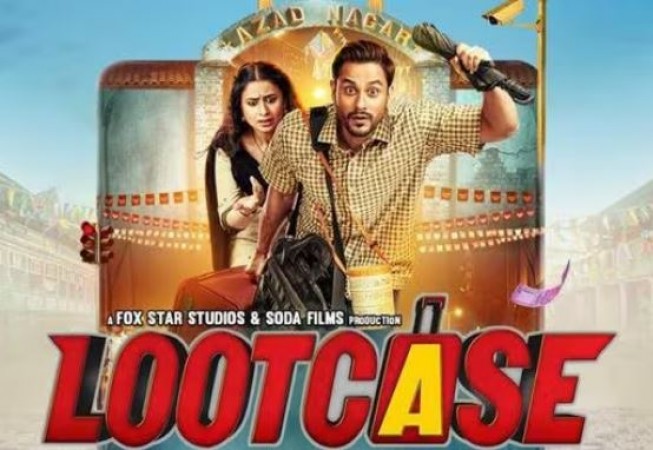
With a broad variety of genres, styles, and influences, Indian cinema is renowned for its inventiveness and diversity. Nonetheless, there are instances when parallels across films from various genres and locales cast doubt on their uniqueness and source material. In 2020, the Indian film "Lootcase" was released; it is strikingly similar to the Nepali film "Jatra," which was released in 2006. This essay will look at the fascinating relationship between these two films and investigate if "Lootcase" was really influenced by "Jatra."
"Lootcase," a comedy film directed by Rajesh Krishnan and starring Kunal Khemu in the lead role, is about a middle-class man who finds a suitcase full of money and embarks on a series of hilarious misadventures. The film gained popularity because of its memorable characters and clever humour.
On the other side, Pradeep Bhattarai's comedy "Jatra" is a Nepali film that stars Rajesh Hamal and Rekha Thapa. The narrative centres on the adventures of a group of people who discover a sizable quantity of money in a bag and how this discovery causes their lives to take an amusing turn. Many people consider "Jatra" to be one of the most popular and well-known comedies in Nepali cinema history.
There are too many obvious parallels between "Lootcase" and "Jatra" to ignore. These are a few of the most noticeable similarities that have received notice:
The main plot of both films centres on common people finding a suitcase that is significantly overflowing with cash. The main plot points of both films revolve around the chaos and humour that follow this discovery.
Character Parallels: There are a lot of similarities between the characters in "Lootcase" and "Jatra" in terms of their personalities, eccentricities, and plot roles. Both films feature the same cast of characters: the gullible husband, the gullible protagonist, the avaricious antagonist, and the humorous side characters.
Funny Scenes: The humor-filled scenes in both films are remarkably similar. Laugh out loud chase scenes and miscommunications are just a couple of the humorous moments that "Lootcase" imitates from "Jatra."
Dialogue and Scenes: "Lootcase" seems to have taken direct inspiration from "Jatra" for a number of its dialogue and scenes. The similarity between the two films is further enhanced by their use of distinctive catchphrases and one-liners.
Tone and Style: "Lootcase" shares a lot of the humorous tone and style of "Jatra." Both films make consistent use of slapstick humour, clever banter, and ridiculous situations.
The similarities between "Lootcase" and "Jatra" could be attributed to a number of factors:
The possibility exists that the creators of "Lootcase" took inspiration from "Jatra" without giving due credit to the original work. This is not unusual in the film industry, as Bollywood productions are frequently inspired by foreign films, classics, or even regional cinema.
Coincidence: There's a chance that the similarities between the two films are only accidental. After all, finding a suitcase full of cash is a classic comedic setup that has been utilised in countless films all over the world.
Cultural Influence: India and Nepal have similar cultures and share a border. It's possible that some of the story and humour in "Jatra" reflect a larger cultural background that also has an impact on Indian film.
There is no denying that "Lootcase" and "Jatra" are similar, but it is unclear exactly how the two are related. Movies frequently take ideas for their stories from a variety of sources, and it's sometimes difficult to distinguish inspiration from copying. There is disagreement over whether "Lootcase" directly borrowed from "Jatra" or if there were only thematic parallels.
In the world of film, narrative frequently crosses boundaries, and directors regularly modify and reframe concepts from other media. Even though it's unclear how much "Lootcase" and "Jatra" are related, they both do a good job of entertaining and satirising their respective audiences.
It is up to each viewer to decide for themselves whether "Lootcase" is a copy of or inspired by "Jatra" due to perception. Nonetheless, it is important to recognise the international scope of the film industry, where concepts, themes, and narrative strategies are exchanged, modified, and created in an effort to produce interesting and enjoyable motion pictures.
A Closer Look at Flying Jatt and Quicksilver
Bollywood's Best-Kept Secret: The Ever-Changing Title of 'One Two Ka Four'
Juhi Chawla and Jackie Shroff's Absence from 'One 2 Ka 4' Promotional Materials